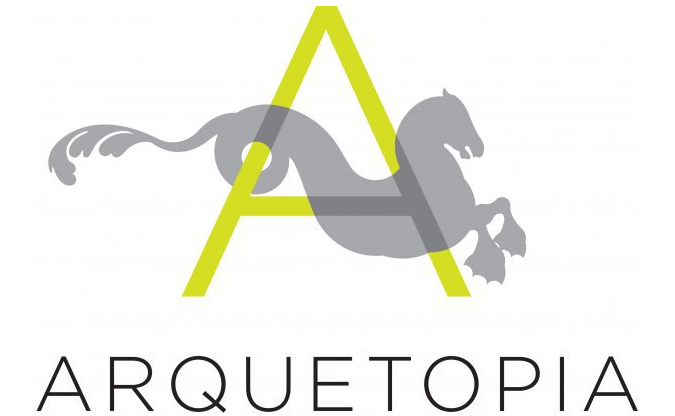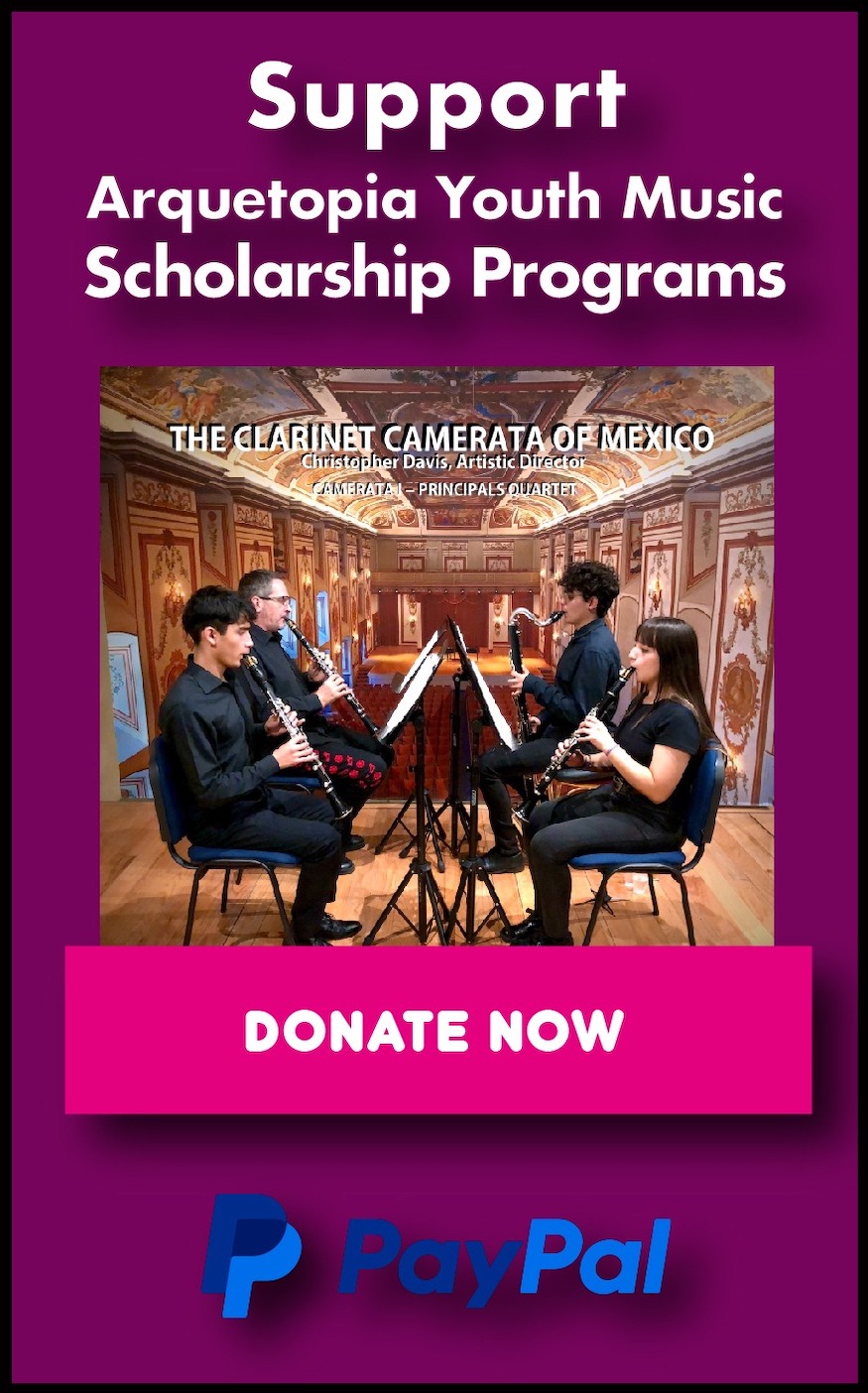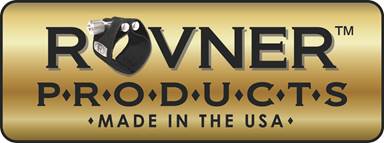The Rush of Gold:
Gold Leafing & Estofado Instructional Program
Arquetopia Location: Puebla, Mexico

This comprehensive, customized instructional residency program offers competitive professional opportunities for emerging and mid-career, national and international artists age 20 and over.
The Viceroyalty of New Spain resulted from the amalgamation of Mesoamerican and European civilizations, creating a complex system of cultural overlap. New visual languages emerged, blending vast artistic traditions with unique iconography and techniques, producing objects and images that profoundly transformed the course of art. Gold, in particular, played a crucial role in this fusion, reflecting the Spanish Empire's obsession with the metal as a symbol of wealth and power. Beyond its economic value, gold also held deep religious significance, symbolizing divine light, the presence of God, and the eternal glory of the Church. This dual role of gold influenced both the material culture and the religious iconography of the period, shaping the visual legacy of colonial art.
The city of Puebla, strategically located at a key point along the Atlantic axis, boasts a history spanning nearly five centuries and has earned its place as the capital of Baroque art in the Americas. Its prime location on a major transportation corridor allowed the regional Baroque style to be exported, significantly influencing the development of other cities across the Americas and Europe. In a similar vein, Cusco, the historic capital of the Inca Empire, became a key center for Baroque art in Peru, where a unique fusion of indigenous Andean traditions and European Baroque techniques emerged. Both cities became crucial sites for the visual transformation of the Americas, with Baroque art and architecture conveying divine power and religious authority, especially within the context of the Catholic Church's efforts during the Counter-Reformation.
Puebla's Baroque style blended European techniques with indigenous craftsmanship, giving rise to a distinctive fusion of cultures that shaped the city’s visual identity. This blend is most evident in the use of gold gilding and estofado, which symbolize divine light and eternal glory, and can be found in many of Puebla’s most iconic monuments. Likewise, Cusco’s Baroque art incorporated gold as a symbol of both sacred and royal power, merging Incan symbolism with European styles. These elements exemplify how Baroque art in both Puebla and Cusco was not merely decorative, but deeply intertwined with the religious and cultural contexts of the time, creating a lasting legacy that continues to influence the artistic landscapes of both regions.
Gold gilding and estofado have long been associated with power and divinity, playing a significant role in the history of art and art-making. Due to its glowing characteristics, permanence, flexibility, and light-reflecting qualities, gold leaf has been a prized resource for artists across various practices. Its use not only symbolized wealth and authority but also served to elevate religious art, representing divine light and eternal glory. Estofado, a technique often used in conjunction with gold gilding, creates intricate iconographic patterns and subtle textures by scratching through one layer of paint to reveal the brilliant burnished gold beneath. This process allowed for more intricate details and a greater sense of depth in Baroque art. Estofado and gold gilding together became key decorative elements, especially in religious contexts, enhancing the visual power and spiritual significance of art pieces such as altarpieces, religious furniture, and architecture. These techniques symbolized a fusion of the sacred and the material world, highlighting the divine and the authority of the church in both Puebla and Cusco.
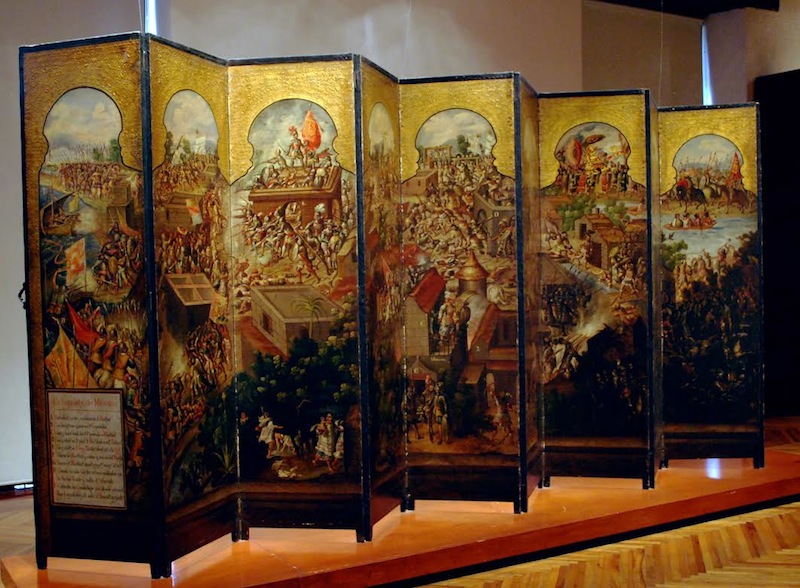
The city of Puebla, strategically located at a key point along the Atlantic axis, boasts a history spanning nearly five centuries and has earned its place as the capital of Baroque art in the Americas. Its prime location on a major transportation corridor allowed the regional Baroque style to be exported, significantly influencing the development of other cities across the Americas and Europe. In a similar vein, Cusco, the historic capital of the Inca Empire, became a key center for Baroque art in Peru, where a unique fusion of indigenous Andean traditions and European Baroque techniques emerged. Both cities became crucial sites for the visual transformation of the Americas, with Baroque art and architecture conveying divine power and religious authority, especially within the context of the Catholic Church's efforts during the Counter-Reformation.
Puebla's Baroque style blended European techniques with indigenous craftsmanship, giving rise to a distinctive fusion of cultures that shaped the city’s visual identity. This blend is most evident in the use of gold gilding and estofado, which symbolize divine light and eternal glory, and can be found in many of Puebla’s most iconic monuments. Likewise, Cusco’s Baroque art incorporated gold as a symbol of both sacred and royal power, merging Incan symbolism with European styles. These elements exemplify how Baroque art in both Puebla and Cusco was not merely decorative, but deeply intertwined with the religious and cultural contexts of the time, creating a lasting legacy that continues to influence the artistic landscapes of both regions.
Gold gilding and estofado have long been associated with power and divinity, playing a significant role in the history of art and art-making. Due to its glowing characteristics, permanence, flexibility, and light-reflecting qualities, gold leaf has been a prized resource for artists across various practices. Its use not only symbolized wealth and authority but also served to elevate religious art, representing divine light and eternal glory. Estofado, a technique often used in conjunction with gold gilding, creates intricate iconographic patterns and subtle textures by scratching through one layer of paint to reveal the brilliant burnished gold beneath. This process allowed for more intricate details and a greater sense of depth in Baroque art. Estofado and gold gilding together became key decorative elements, especially in religious contexts, enhancing the visual power and spiritual significance of art pieces such as altarpieces, religious furniture, and architecture. These techniques symbolized a fusion of the sacred and the material world, highlighting the divine and the authority of the church in both Puebla and Cusco.
Biombo (folding screen) by Alejandro Linares Garcia depicting the conquest of Mexico from the 17th century. Franz Mayer Museum, Mexico City

1. The Connectivity of Concepts
Arquetopia’s Gold Leafing Instructional Program integrates history, material culture, and artistic practice, fostering a deeper understanding of how gold intersect with broader social, religious, and historical contexts. Through academic visits and direct engagement with the local context, participants connect the tactile experience of working with gold leaf to larger conceptual frameworks, exploring visual culture and the symbolic use of gold in both religious and secular art. This approach encourages participants to reflect on how artistic practices, particularly the use of gold, have shaped narratives of power, divinity, and authority throughout history, and how these narratives continue to influence contemporary art and culture.
2. The Practice of Unlearning
This program challenges participants to dismantle preconceived notions about art and the material culture it produces by critically examining gold's symbolism and the extractive practices tied to its production. By interrogating how gold has been commodified, recontextualized, and embedded with power structures over time, participants engage in a process of unlearning. They question dominant narratives surrounding luxury, power, and religious symbolism, and reorient their practice toward a more conscious and nuanced relationship with materials, craftsmanship, and the environment. This approach emphasizes how artistic practice, rather than simply the aesthetic result, can offer new ways to challenge historical ideologies and engage with contemporary conversations on power, value, and environmental responsibility.
3. The Rhythm of Creating
In this program, rhythm becomes a space where participants explore the relationship between the body, labor, and the process of creating, using both research and intuition to challenge historical narratives surrounding gold and its cultural implications. The hands-on exploration of gold leafing and estofado techniques encourages participants to engage in a dynamic process where making, questioning, and discovering unfold in constant dialogue. This approach transforms artistic practice into a site of active inquiry, where intuition serves as a method for rethinking the ideological legacies embedded in gold imagery, deepening material understanding, and forging new connections between the past and present, especially regarding themes of power, value, and environmental extraction.
4. The Ethics of Movement
The process of creation, as Rancière describes through the concept of the "emancipated spectator," transforms both the artist and the viewer into active participants in the act of meaning-making. This program emphasizes the ethics of movement by asking participants to consider the responsibility that comes with engaging with images, particularly gold and its symbolism, and their potential to shape perception. Whether through the physical act of gold leafing, the transmission of knowledge, or the cultural significance of the imagery, participants are invited to reflect on how artistic practice can navigate difference, reciprocity, and responsibility. Additionally, the encounter with the viewer through the work becomes an ethical opportunity to engage with questions, prompting a deeper reflection on how artistic choices—especially those involving materials linked to extractive practices—shape understanding, challenge narratives, and open spaces for dialogue.
The Gold Leafing (Gilding) and Estofado Instructional Program is a 3-week mentored production program that includes 27 hours of instruction by a prominent master art restorer in several diverse techniques using mediums and supports traditionally used in pre-Columbian and Baroque art. Participants can apply the technique of gold and silver leafing, learn the use of diverse stuccos and traditional primers (such as cactus and lime, rabbit glue, and gelatin) and their use on different supports (paper, wood, clay); and experiment with different finishes using natural pigment patinas and egg tempera paint. Instruction is in Spanish, though participants do not need to speak Spanish in order to successfully complete the course. Individual mentoring is provided by our directorial and curatorial staff for personalized research assistance/resources, project guidance, and critique. Participants of this program also work independently in our spaces.
Arquetopia’s Gold Leafing Instructional Program integrates history, material culture, and artistic practice, fostering a deeper understanding of how gold intersect with broader social, religious, and historical contexts. Through academic visits and direct engagement with the local context, participants connect the tactile experience of working with gold leaf to larger conceptual frameworks, exploring visual culture and the symbolic use of gold in both religious and secular art. This approach encourages participants to reflect on how artistic practices, particularly the use of gold, have shaped narratives of power, divinity, and authority throughout history, and how these narratives continue to influence contemporary art and culture.
2. The Practice of Unlearning
This program challenges participants to dismantle preconceived notions about art and the material culture it produces by critically examining gold's symbolism and the extractive practices tied to its production. By interrogating how gold has been commodified, recontextualized, and embedded with power structures over time, participants engage in a process of unlearning. They question dominant narratives surrounding luxury, power, and religious symbolism, and reorient their practice toward a more conscious and nuanced relationship with materials, craftsmanship, and the environment. This approach emphasizes how artistic practice, rather than simply the aesthetic result, can offer new ways to challenge historical ideologies and engage with contemporary conversations on power, value, and environmental responsibility.
3. The Rhythm of Creating
In this program, rhythm becomes a space where participants explore the relationship between the body, labor, and the process of creating, using both research and intuition to challenge historical narratives surrounding gold and its cultural implications. The hands-on exploration of gold leafing and estofado techniques encourages participants to engage in a dynamic process where making, questioning, and discovering unfold in constant dialogue. This approach transforms artistic practice into a site of active inquiry, where intuition serves as a method for rethinking the ideological legacies embedded in gold imagery, deepening material understanding, and forging new connections between the past and present, especially regarding themes of power, value, and environmental extraction.
4. The Ethics of Movement
The process of creation, as Rancière describes through the concept of the "emancipated spectator," transforms both the artist and the viewer into active participants in the act of meaning-making. This program emphasizes the ethics of movement by asking participants to consider the responsibility that comes with engaging with images, particularly gold and its symbolism, and their potential to shape perception. Whether through the physical act of gold leafing, the transmission of knowledge, or the cultural significance of the imagery, participants are invited to reflect on how artistic practice can navigate difference, reciprocity, and responsibility. Additionally, the encounter with the viewer through the work becomes an ethical opportunity to engage with questions, prompting a deeper reflection on how artistic choices—especially those involving materials linked to extractive practices—shape understanding, challenge narratives, and open spaces for dialogue.
The Gold Leafing (Gilding) and Estofado Instructional Program is a 3-week mentored production program that includes 27 hours of instruction by a prominent master art restorer in several diverse techniques using mediums and supports traditionally used in pre-Columbian and Baroque art. Participants can apply the technique of gold and silver leafing, learn the use of diverse stuccos and traditional primers (such as cactus and lime, rabbit glue, and gelatin) and their use on different supports (paper, wood, clay); and experiment with different finishes using natural pigment patinas and egg tempera paint. Instruction is in Spanish, though participants do not need to speak Spanish in order to successfully complete the course. Individual mentoring is provided by our directorial and curatorial staff for personalized research assistance/resources, project guidance, and critique. Participants of this program also work independently in our spaces.
Artist-in-Residence and Arquetopia Residency Scholarship Award Recipient, Jocelyn Salaz (USA)
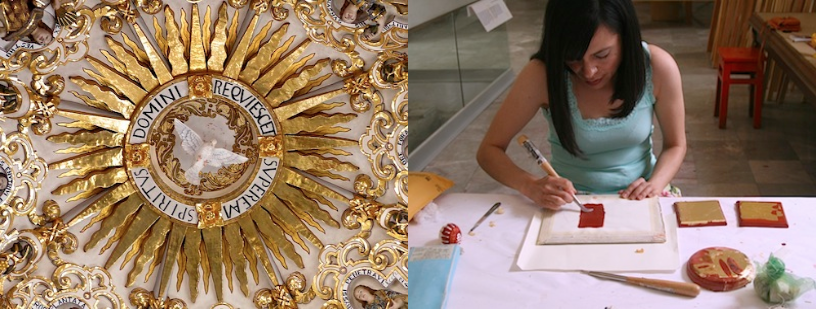
Rotunda ceiling detail of the Capilla del Rosario, Templo de Santo Domingo de Guzmán in the central historic district of Puebla, Mexico
PROGRAM DURATION / TIME PERIOD
Sessions are 3 weeks, with option to extend for 1-2 more weeks of continued production as a standard Art, Design or Photography Program. Dates are not predetermined but are nominated by the applying artist.
WHAT THIS COMPREHENSIVE INSTRUCTIONAL PROGRAM INCLUDES
WHAT THIS COMPREHENSIVE INSTRUCTIONAL PROGRAM INCLUDES
Technique Instruction:
- 27 hours master instruction, at 9 hours per week
- A weekly meeting with our directorial and curatorial staff for personalized mentoring, research assistance, project guidance, and critique
- Furnished, private bedroom
- 24-hour access to the kitchen for participants to prepare their own meals; meals/food are the participant’s responsibility
- Wireless Internet
- Use of Arquetopia’s common spaces including outdoor terraces
- Shared, serviced (single) bathrooms with modern fixtures and showers
- Housekeeping
- 24-hour access to large and bright, shared art studio with generous natural light
- Personal workspace with a large table and wall space
- Some tools provided
- Materials and supplies for the instructional course provided
- Materials and supplies for additional project production not included but available for purchase locally
PROGRAM TUITION INFO & APPLICATION DEADLINES
E-mail This email address is being protected from spambots. You need JavaScript enabled to view it. for tuition info and application deadlines for this program.
TO APPLY
Click here to apply for this instructional program.
Click here to apply for this instructional program.
